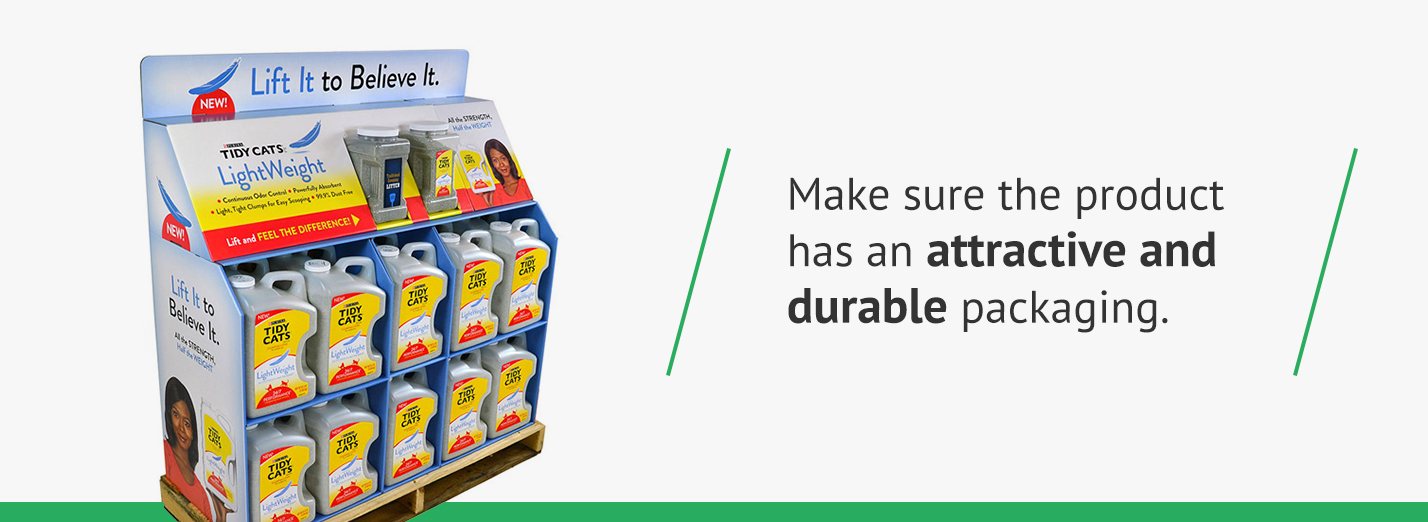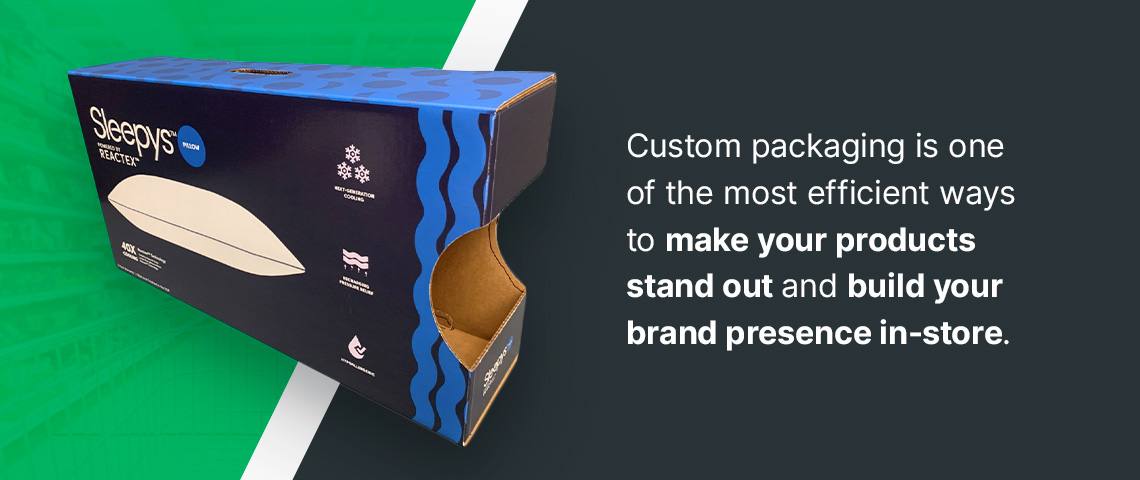Chapter 2: How to Market Your Product to Retailers
There are plenty of reasons to market your product in a big-box store, such as reaching more customers and increasing profits. As with any worthwhile endeavor, it takes some patience and persistence to get into a big-box store, and it doesn’t happen overnight. You’ll have to market your product to major retailers and prove it sells. All in all, big-box stores want to market popular items at a great price.
Getting into a big-box store feels less intimidating if you know what to expect and take time to prepare. You’re also more likely to succeed if you learn what retailers want and adjust your approach accordingly.
This chapter shows you how to build your brand and prepare your product for major retailers so you can make a positive first impression.
How to Prepare Your Product for Sale
Before marketing to retailers, you need to prepare your product and build your brand. That involves understanding your target market, creating a strong sales pitch and showing how your product will profit the store.
Here are tips to get your product and brand ready for the big-box leagues:
- Create a unique product: Before you consider selling to a big-box store, you need to have a unique product that solves problems for consumers. Ideally, your product should do something that competitors’ items can’t and offer qualities that consumers want and need. Even if your product is similar to other items out there, consider ways to set it apart visually or tweak some of its qualities to make it stand out.
- Know your product inside out: Before you contact a potential buyer, you need to know everything there is to know about your product, including sales statistics, costs and your target market. You want the buyer to have faith in you and your product, and one way to do that is to demonstrate your expertise.
- Pay attention to the packaging: Your product needs to be shelf-ready and have attractive and durable packaging. When you design the packaging, be sure to consider the buyer’s perspective. Also, make sure the packaging communicates what your product is all about in just a few seconds. It helps to look at competitors’ products for guidance, but aim to make your packaging more interesting.
- Build a website: It’s essential to create a professional-looking website for your product. That way, buyers will find your product when they look for it online. Consider showcasing your product in a video on your website so buyers can quickly and easily learn about its benefits. Also, make sure your product costs a little more on your website than what it would in a big-box store to show you’re not competing with the retailer.
- Create a sell sheet: Create a sell sheet to bring to the pitch meeting or to send to the retailer. It’s a page-long advertisement of your product. It should reflect your brand and concisely describe how your product solves a problem. Ensure it includes your company logo, product specifications and benefits, colorful images and a strong call to action (CTA).
- Offer a product line: Offering a product line rather than a single product can make your pitch much more appealing. It encourages customers to buy more from brands they appreciate. For example, if you produce and sell coffee, you might offer a range of flavors, sizes or styles to appeal to a wide range of consumers. Customers who love your coffee brand will be eager to try new flavors or related products whenever you release something different.
- Consider the retailer’s needs: Prepare to do whatever it takes to meet the retailer’s needs. For example, if a big-box store puts in a large order, they’ll likely expect a fast turnaround. You’ll need to fill their order quickly, so ensure you have an efficient production line before you contact a major retailer. Also, be ready to be flexible with pricing.
- Pick the right retailer: If you manufacture plumbing tools, you’d probably be better off pitching your product to Lowe’s rather than Whole Foods Market. To keep yourself from wasting time, get to know your target audience and pick a retailer accordingly. You’ll also want to learn as much about a retailer and its overall strategy to determine if it’s a good fit for you.
- Build demand for the product: Big-box retailers want to do business with companies that already have a history of success and demand for their products. Even if it takes a few years, you’ll want to build a solid track record before applying to a big-box store. That may mean selling your products in smaller stores before reaching out to major retailers.
- Know your production capacity: You need to know the maximum output your company can maintain for a specific amount of time. Knowing your production capacity can reassure buyers that you can fill their orders and meet their timing needs. If you discover inefficiencies in your production process, you can make adjustments before applying to a big-box store.
- Establish your terms: Know your terms before you meet with a buyer so you’re ready to answer their questions. That includes knowing your turnaround time, how you ship and how you handle returns of damaged goods.
- Prepare your pitch: The pitch is your opportunity to show how your product solves problems. It should be concise and engaging. Before you meet with a buyer, put adequate time into crafting a unique and convincing pitch. You’ll need to know the buyer’s target market and strategy and have a clear vision of your company to create a pitch that shows you’re an expert.
- Consider trade shows: Consider promoting your product at trade shows. Buyers may visit your booth to learn more about your brand. If they like what they see, it could be the beginning of a long-lasting relationship.
Lastly, it’s essential to be persistent. You’ll be competing against many other businesses trying to get their products onto the shelves, so it’ll take time, effort and maybe some product tweaking to make an impact. In the meantime, aim to develop a relationship with buyers and make it easy for them to remember your brand.
How to Build Brand Affinity
Brand affinity is the connection your audience feels with your brand, usually resulting from a sense of shared values. It’s worth building brand affinity because it leads to customer loyalty. When customers feel connected to a brand, they are more likely to stick with the brand regardless of pricing or competition.
As an example, think of a brand that resonates with you and reflects your lifestyle and values. If you’re a fan of a particular brand, chances are you enjoy supporting the company and feel good buying products from them. Custom packaging is one of the most efficient ways to make your products stand out and build your brand presence in-store.
How does brand affinity relate to big-box stores? By building brand affinity, you can prove to retailers you have plenty of fans who demand your product. If a buyer visits your website or social media account, for example, and finds a community of people who are eager to buy your products, they’ll see more reason to market your merchandise in their store.
There are several ways to build brand affinity. Here are some tips:
- Know your brand personality: Your brand’s personality is what makes it relatable to your customers. There are several dimensions of brand personality, including sincerity, excitement, competence, sophistication and ruggedness. You’ll need to know and develop your brand personality to increase brand affinity.
- Know your customers: It’s essential to understand as much as you can about your customers. The more you know, the easier it’ll be to tailor your brand to suit their values and lifestyles. You can use social media data, surveys, interviews and anything else that’ll help you understand what your audience cares about and how they spend their time.
- Build trust: Your customers should feel a sense of trust with your brand if you want them to support you. To build trust, keep customers informed about the latest company updates. Try to be as transparent as possible with your goals.
- Show appreciation: Make customers feel appreciated by responding to their inquiries promptly and providing exceptional customer service. If customers feel taken care of, they’ll be loyal to your brand in return.
- Use social media: Take advantage of social media to build a sense of community around your brand. You can use social media to share unique content and interact with customers directly.
- Communicate thoughtfully: Ensure all forms of communication reflect your brand’s personality. This includes emails, direct mail, replies, posts, comments and any other message you send to your audience.
Make sure your product’s packaging and display highlight your brand’s personality so your fans instantly recognize your products in stores. Contact us at Creative Displays Now if you need help designing a retail display that captures your brand.
Table of Contents
- How to Get Your Product Into Big-Box Stores
- Chapter 1: Why Market Your Products in Big-Box Stores?
- Chapter 2: How to Market Your Product to Retailers
- Chapter 3: Find the Right Big-Box Store for Your Products
- Chapter 4: How to Approach Retail Stores to Sell Your Product
- Chapter 5: Get Your Products in Stores With Custom Displays


